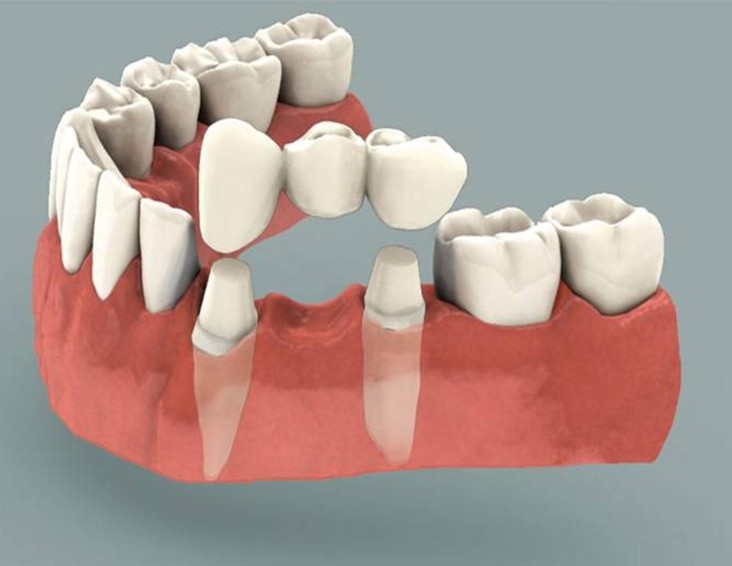Dental bridges are a popular solution for people looking to replace missing teeth and regain a full, confident smile. Missing teeth not only affect the appearance of your smile but can also impact your ability to chew, speak, and maintain proper oral health. A dental bridge effectively fills these gaps, enhancing both functionality and aesthetics. Here’s a comprehensive look at what a dental bridge in Oceanside is, how it works, and why it may be the right choice for you.
What Is a Dental Bridge?
A dental bridge is a fixed dental restoration used to replace one or more missing teeth by anchoring an artificial tooth (or teeth) to adjacent natural teeth or dental implants. The bridge spans the gap created by missing teeth, “bridging” it with artificial teeth known as pontics. Dental bridges not only restore the look of a complete smile but also help prevent other teeth from shifting out of place, which can lead to misalignment and bite issues.
Types of Dental Bridges
There are several types of dental bridges, each suited to different needs:
- Traditional Dental Bridge: This is the most common type of bridge. It consists of one or more pontics held in place by crowns cemented onto the adjacent teeth. Traditional bridges are strong and ideal for filling gaps where there are natural teeth on both sides.
- Cantilever Dental Bridge: Similar to a traditional bridge, a cantilever bridge is anchored by a crown on just one side of the missing tooth or teeth. This type is used when there are adjacent teeth only on one side of the gap.
- Maryland Bonded Bridge: Also known as a resin-bonded bridge, this option uses a metal or porcelain framework with wings on each side that bond to the back of the adjacent teeth. Maryland bridges are less invasive and ideal for front teeth but may not be as durable for areas that endure heavy chewing.
- Implant-Supported Bridge: As the name suggests, this type of bridge is supported by dental implants rather than natural teeth. Implant-supported bridges are highly stable and are ideal when several teeth are missing, providing a longer-lasting solution with a natural look and feel.
Benefits of a Dental Bridge
Opting for a dental bridge in Oceanside offers numerous advantages:
- Restored Appearance: A bridge fills in the gap caused by missing teeth, providing a full, natural-looking smile and boosting your confidence.
- Improved Functionality: Missing teeth can make it difficult to chew and speak properly. A dental bridge restores these functions, allowing you to eat and speak more comfortably.
- Prevention of Tooth Shifting: When a tooth is lost, the surrounding teeth may shift into the space, potentially leading to bite misalignment. A bridge keeps your teeth in their proper positions, helping to maintain overall dental alignment.
- Enhanced Oral Health: Gaps in your smile can make oral hygiene more challenging, leading to increased risk for decay and gum disease. A bridge closes these spaces, making it easier to maintain good oral hygiene.
What to Expect During the Dental Bridge Procedure
The process of getting a dental bridge usually involves a few steps and takes place over two or more visits:
- Preparation: The dentist begins by preparing the teeth adjacent to the gap for crowns, which will support the bridge. If using a traditional or cantilever bridge, these supporting teeth are reshaped to accommodate the crowns.
- Impressions and Temporary Bridge: Once the teeth are prepared, an impression of the area is taken to create a custom bridge that fits perfectly. In the meantime, a temporary bridge may be placed to protect the exposed teeth and gums.
- Fitting the Permanent Bridge: Once your permanent bridge is ready, you’ll return to the dentist to have it fitted. The dentist will make adjustments to ensure a comfortable and secure fit before permanently cementing it in place.
Caring for Your Dental Bridge
With proper care, a dental bridge in Oceanside can last many years. Here are some tips to ensure its longevity:
- Maintain Good Oral Hygiene: Brushing twice a day and flossing around the bridge will help prevent plaque buildup and gum disease.
- Use Special Floss or Dental Picks: Flossing around and under the bridge can be tricky, so using tools designed for bridge cleanings, such as floss threaders or interdental brushes, can help keep the area clean.
- Regular Dental Check-Ups: Routine dental visits are essential for monitoring the condition of your bridge and overall oral health.
- Avoid Hard Foods: Chewing on hard foods or ice can damage your bridge. Stick to softer foods and avoid using your bridge to bite into extremely hard items.
Dental bridges offer a reliable and aesthetically pleasing solution for those missing teeth, restoring both function and beauty to your smile. If you’re considering a dental bridge in Oceanside, consulting with a skilled dentist can help you understand your options and determine the best type of bridge for your needs.
For personalized advice or to schedule an appointment, contact Grace Dental at (760) 653-8338. Our team is here to help you achieve a complete, confident smile with a dental bridge tailored just for you!






